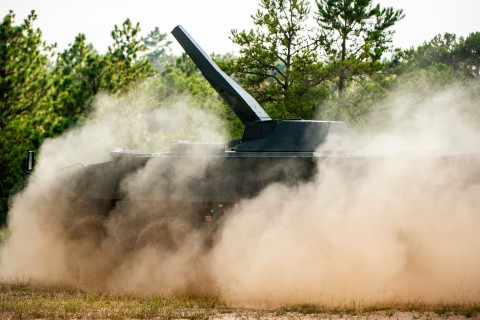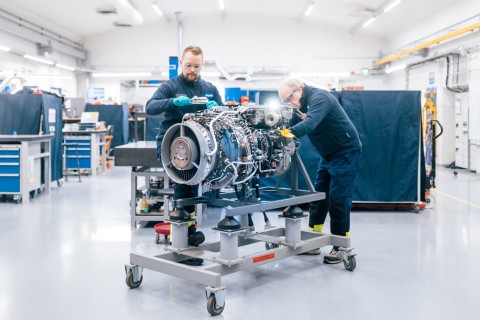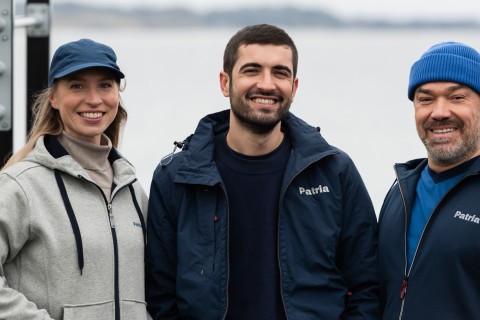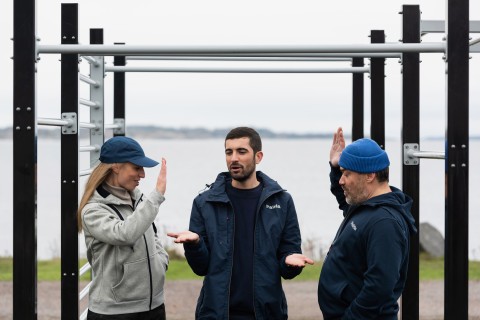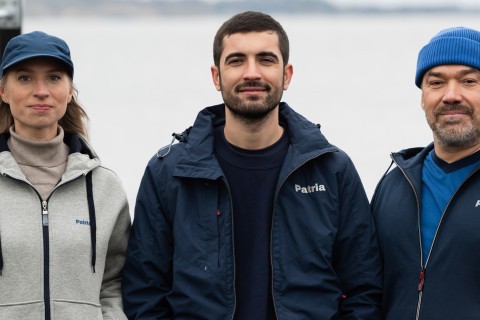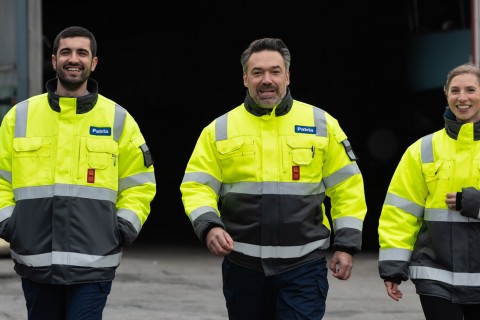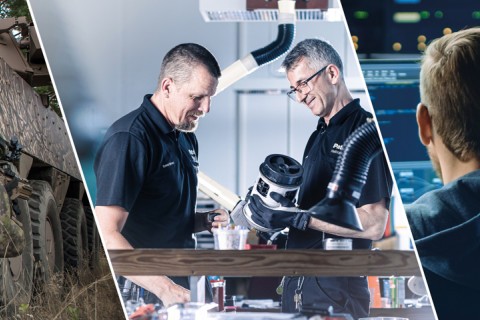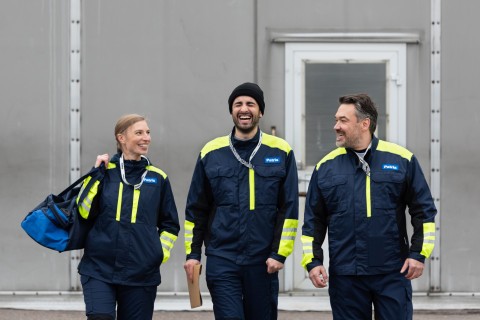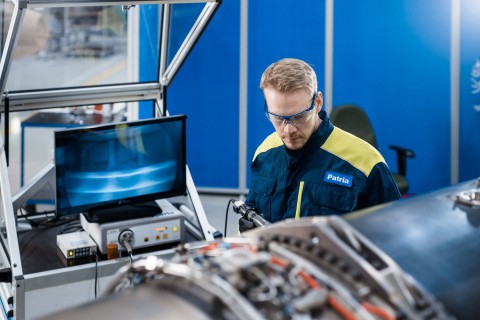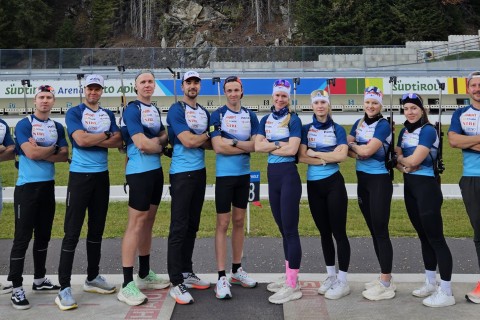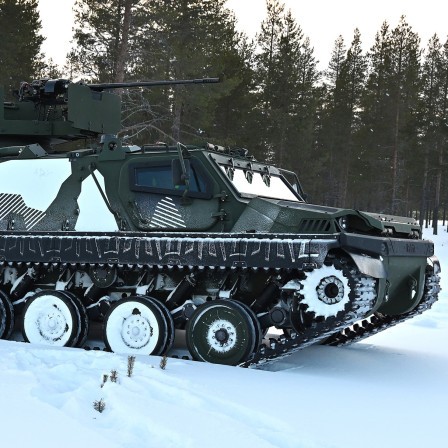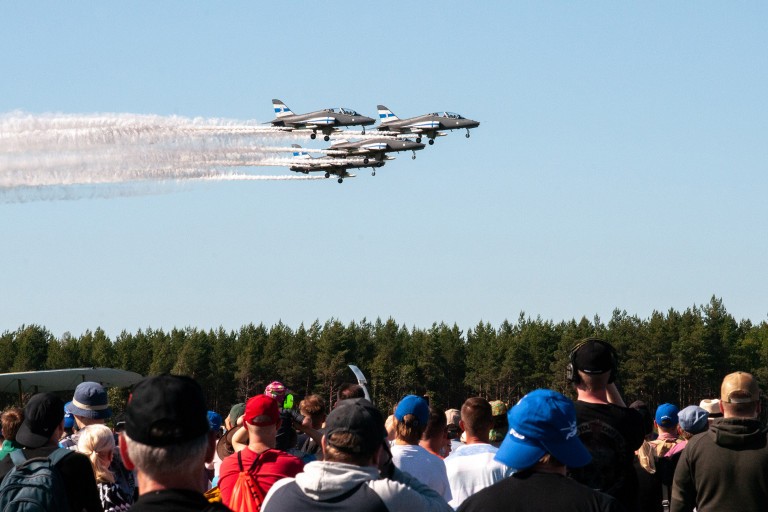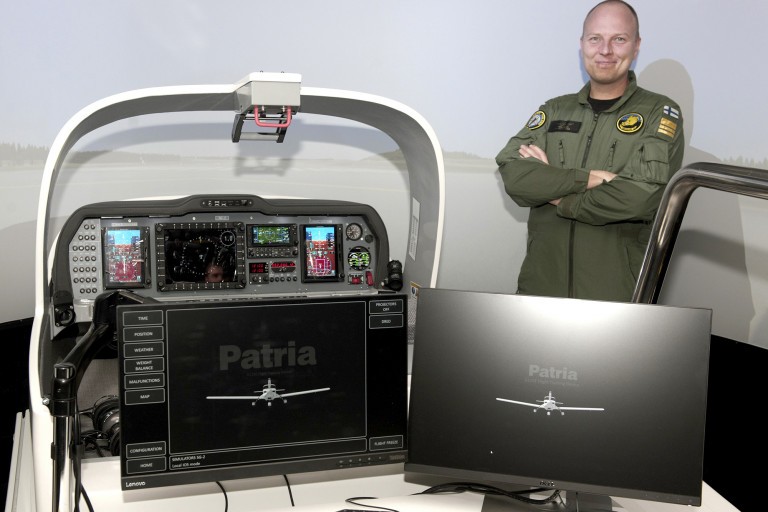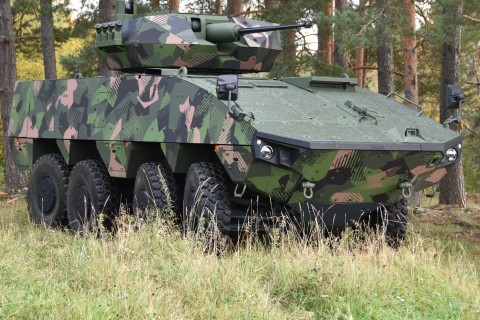
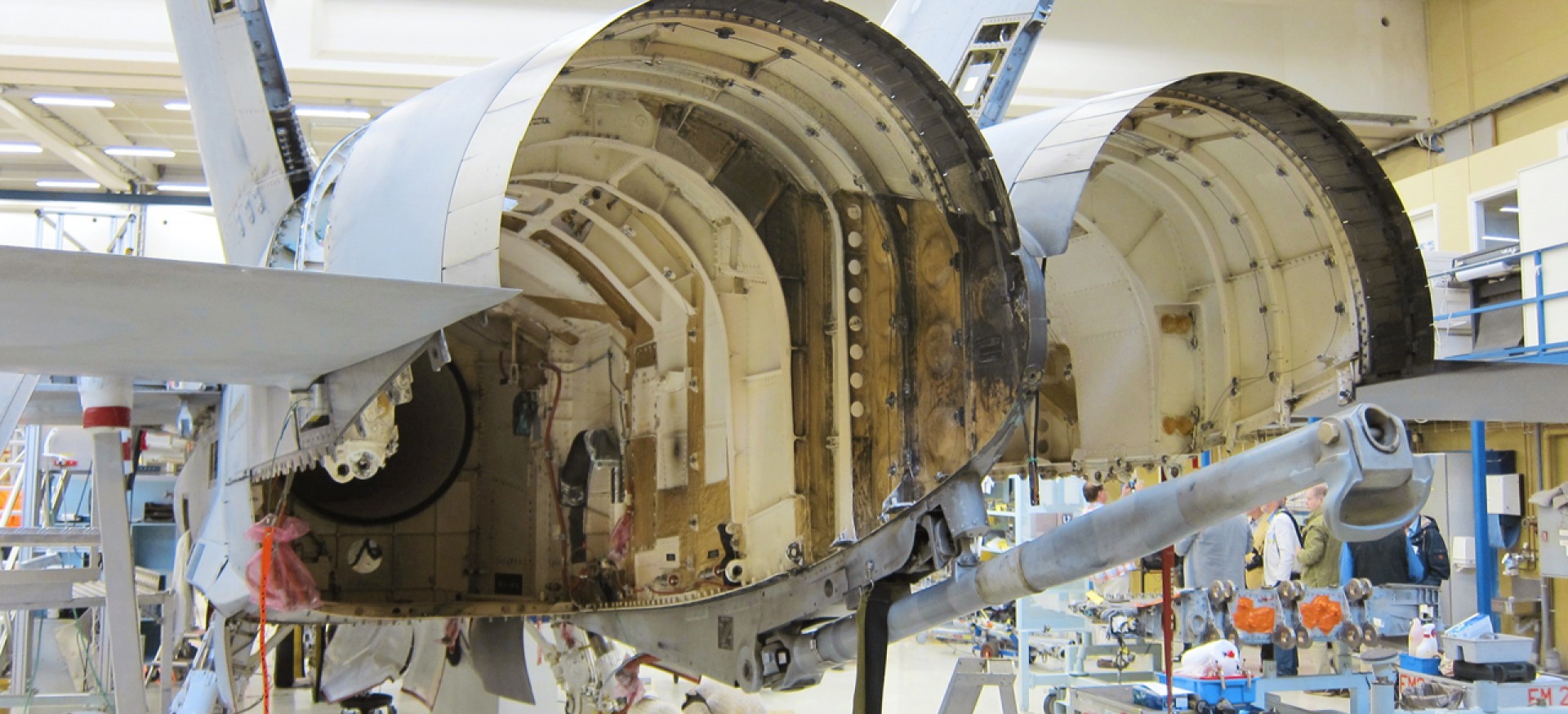
Safeguarding the lifespan of Hornet fighters
7.12.2015
Patria performs structural inspections and repairs on the Finnish Air Force’s (FINAF) Hornets, ensuring the operational condition and fighting capability of these fighters for the duration of their scheduled service lives.
Text: Matti Remes
Photos: Finnish Air Force, Derek Bower
The scheduled phase-out of the FINAF F/A-18 Hornet fighter fleet is between 2025 and 2030, when these aircraft reach the age of 30 years. Their airworthiness and mission capability must be ensured for the duration of this lifespan. This is the objective of the Hornet structural modification programme, which focuses on the studies of structural fatigue, the repair of damage already arisen and preventive measures. “The key objective of these modifications is to extend the lifespan of the Hornets’ structures in an economical and safe manner, to enable them to reach the end of their planned life-cycle,” comments Captain (eng) Kalle Vaaraniemi from the FINAF Headquarters.
Life-cycle management requires attention
Patria is responsible for the Hornets’ structural modifications. “The workshare between the customer and industry is clear,” says Mika Keinonen, Head of Planning at Patria Aviation. “The customer i.e. the FINAF specifies the objectives and requirements in question. Patria conducts all the required studies as a basis for presenting the various implementation options.” Keinonen emphasises the fact that, in structural management, being continuously alert is of paramount importance. You need to monitor the stress that flying imposes on aircraft structures, while implementing the necessary measures and maintaining a structural inspection system that will ensure safe flying. Preparations for structural repairs are made at Patria’s aircraft maintenance department, with the actual repairs being carried out at a separate structural repair workshop. “Structural repairs often require a partial dismantling of the aircraft. This job is best conducted by the aircraft mechanics maintaining the aircraft regularly,” Keinonen comments. According to Keinonen, efficient resource planning can ensure that repairs are coordinated with regular overhaul and maintenance operations. This ensures that unnecessary dismantling and installation operations and – in turn – extra costs and working hours are minimised.
Fatigue causes cracks in structures
The F/A-18 fighter was designed for both fighter and attack duties. In Finland, Hornets have principally seen service in the role of air-to-air interceptors, but after the current Mid-Life Upgrade II programme Finnish Hornets will also have an air-to-ground capability. Training flights for Hornet fighters involve a high number of manoeuvres typical of aerial combat, which causes stress on the fighters’ structures. The service life of Hornet fighters is limited mainly by the fatigue imposed on structures made of aluminium alloys. Hornet fighters also have composite structures made of titanium and carbon fibre, but these are less susceptible to fatigue. “Due to metal fatigue, cracks begin to appear in some structures by half of their planned service life. This is normal in the structures of a highly manoeuvrable fighter whose structure has been pushed to its limit in order to minimise weight,” Mika Keinonen comments. The structural fatigue life is an important design factor for a combat aircraft. The manufacturer specifies the service life and an inspection programme for key structures, to ensure their safe condition and airworthiness. However, the Finnish inspection results and usage experience of the Hornets have shown the necessity to refine these instructions. A service life of a structure is measured in flying hours, or using what is known as a fatigue index. The latter variable refers to the accumulated strain to which a structure is subjected during its service life.
One hundred structural components under monitoring
According to Kalle Vaaraniemi, the life-cycle management of the Hornet’s fighter structure covers around one hundred structural components. Several dozen of these are modified during the fighter’s life span. “Tiny cracks, present in metal structures from the very beginning, widen at a very slow rate during the aircraft’s service life. This widening tendency can be slowed down by means such as making the structure sturdier, by removing cracks already present through grinding, or by replacing structural fasteners,” Vaaraniemi says. After the identification of a structural component which limits the aircraft’s service life, a decision is made on a replacement of a component or its pre-emptive modification on a case-by-case basis. Small components with cracks are replaced, but larger structures of the FINAF Hornets will not be replaced. “The middle section of the fuselage of the U.S. Navy Hornets are replaced to extend the lifespan of the fleet. However, from the very beginning the Finnish policy has been to avoid large modifications on this scale. For example, replacing the fuselage’s middle section would mean disassembling almost the entire aircraft, making the project economically non-feasible in view of the aircraft’s remaining service life,” Vaaraniemi says.
Domestic research is necessary
Major (eng) Riku Lahtinen was involved when, the measurement system for identifying fatigue damage in Hornets’ structures and the related structural modification programme were built up at the turn of the millennium. Today, he is Deputy Director at the Aerial Systems Department of the Finnish Defence Forces Logistics Command. “At first, data and software for structural monitoring were obtained from the U.S. manufacturer of the Hornet fighters. However, it soon became clear that solid domestic expertise was required,” comments Lahtinen. According to Lahtinen, it was crucial to be able to assess the strain to which Hornets’ structures were subjected when flown in accordance with their role in the FINAF use. An additional boost was provided by damages caused by fatigue that were detected in the structures of Hawk jet trainers, as well as the proactive modifications made to the Vinka trainers based on their in-flight measurements. “The FINAF realised that aircraft structures posed a problem. With regard to Hornets, we wanted to intervene as early as possible,” Lahtinen says.
Calculations and laboratory tests
The FINAF, Patria and VTT (Technical Research Centre of Finland) have been involved in research cooperation from the very beginning. Other partners include Aalto University, Finflo Oy and Tampere University of Technology. According to Mika Keinonen, research cooperation has involved the testing of materials and components, the development of processes for carrying out composite repairs, the conducting of complex flow calculations, as well as the installation of in-flight measurement instruments in aircraft. “Structural management would not work without the additional resources made available by the domestic cooperation network,” Keinonen says. Keinonen points out that structural fatigue can be examined using mathematical calculations and through practical experiments. Components particularly susceptible to fatigue can be identified using various simulation models, such as the FEM (finite element method), fatigue experiments or by identifying actual damage caused by flight operations. “Smaller components are also subjected to fatigue experiments at research institutes within the domestic cooperation network,” Keinonen says.
Two aircraft equipped with in-flight measurement instruments
The ability to predict the buildup of cracks requires detailed knowledge of the strain and fatigue caused by flight operations. Two Hornet fighters have been equipped with measurement instruments that provide data of the load to which various structural elements of the aircraft are subjected during flight as a result of aerodynamic load, various accelerations and angular accelerations. Strain gauges attached to various structural components measure the elongation emerging in different flight situations, enabling the calculation of stress. The analysis of an aircraft’s recorded flight history makes use of a neural network – a calculation model that synthesises data and produces pro-active information. A neural network assists in predicting structural fatigue in aircraft that have no measurement instruments on-board. In addition to research conducted in Finland, valuable information has been obtained from other Hornet users around the world. “Finland is in an ideal situation – the air forces of many other countries have been using the same aircraft type for a considerably longer time than we have. The experiences of other users and the damage data provided by them will help us to be better prepared for the future,“ Kalle Vaaraniemi remarks. According to Vaaraniemi, Finns have actively participated in the work of the FISIF (F/A-18 Structural Integrity Forum), an international work group for managing the structural integrity of Hornet fighters. “The information we have received from other users has been extremely valuable for the planning of structural modifications and inspections of the aircraft,” Vaaraniemi adds. At international meetings, we have also distributed summaries of Finnish research reports to other users of the Hornet fighter.
What did you like about the article?
Thank you for your opinion! You can share the article on social media using the buttons below:
